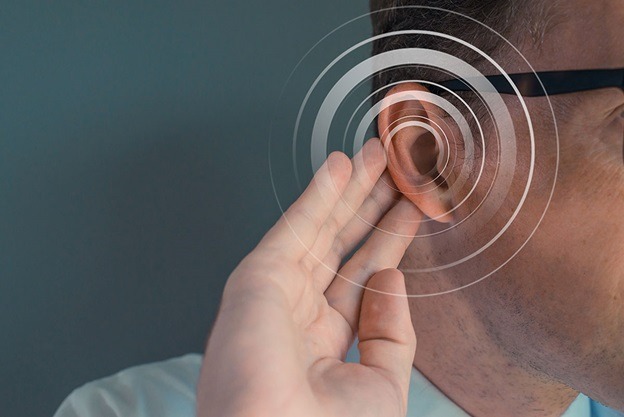Is your hearing impaired? Are you still hesitating whether to invest in an aid? Many people refuse to wear such devices because of their unappealing look.
Despite their unsightly appearance, hearing aids help individuals hear well again. Their job is to make environmental sounds louder in order for the ear to register them. The sounds are collected from the environment with the help of a microphone and converted into a message via a computer chip. Nowadays, there are numerous styles of such devices available online. For instance, Journey Forward has some great options, effective at reducing the symptoms of hearing loss.
The handy tips below will help you pick the right aid.
Consider different styles
There is a variety of hearing aids individuals can choose from, different in their placement, features, and method of work. For instance, a behind-the-ear (BTE) is placed behind the ear, equipped with a tube that connects to the earmold, located inside the ear canal. Both the microphone and the battery compartment are located inside the device.
Moreover, BTEs are considered the largest hearing aids in comparison with the other less visible designs. Nevertheless, these are suitable for people of all ages, even children. Some models come with rechargeable batteries, making them more cost-effective. Unlike other styles, BTEs register higher levels of wind noise.
In-the-canal (ITC) hearing aids are much smaller and lightweight. These devices have the form of a shell, designed to fit inside the canal. ITCs are one of the most comfortable alternatives, as they’re customized to the shape and size of one’s ear. People experiencing mild to severe hearing loss stand to benefit from using these aids, but not those with profound impairment. Anyhow, the speakers of ITCs might get clogged because of the buildup of earwax.
Another popular style, considered as a variation to ITCs is the completely-in-the-canal (CIC). As the name suggests, these devices are fitted deeply inside the ear canal, not partially like in the case of ITCs. Their most prominent benefit is the tiny size and minimal visibility, which makes them excellent for individuals who don’t want other people to know they’re wearing a hearing aid.
Nevertheless, CICs lack some of the useful features other devices have, such as a volume control feature and directional microphones. Similar to ITCs, earwax tends to block the speaker due to the location of the aid. Also, people wearing a CIC are prone to experiencing the occlusion effect, referring to their high voice tones when speaking. Go here for an explanation of the occlusion effect.
Furthermore, in-the-ear (ITE) hearing aids come in two styles, a full shell, and a half shell style. The former is placed on the outer ear, whereas the latter is placed on the lower part of this organ. Irrespective of which style you choose, both of them are equipped with two directional microphones in order for people to hear better when exposed to noise. These devices use large batteries, thus allowing individuals to use them for a longer period.
Additionally, receiver-in-canal (RIC) hearing aids are much alike BTEs, only the former have a wire instead of a tube. If interested in purchasing a RIC, you can choose a model with rechargeable batteries. All models come with directional microphones and manual controls.
Ultimately, open-fit hearing aids are suitable for people who want their ear canal to remain open. This type of device lets low-frequency sounds go through the ear in a natural way, whereas high-frequency sounds enter the organ with the help of the aid. Although these devices are visible, people are much less likely to experience the occlusion effect or deal with earwax buildup.
Consider the extra features
The majority of hearing aids come with a wide range of additional features, designed to improve the hearing ability of users. For example, the noise reduction feature is present in all types of devices. Nevertheless, the noise reduction amount differs across models, which means you need to check the amount before purchasing a particular device. Go to the following link, https://www.wikihow.com/Compare-Hearing-Aids, to check out some methods for comparing hearing aids.
In addition, certain models come with rechargeable batteries for better convenience. Instead of changing the battery frequently, you will only need to recharge it when necessary. Directional microphones are perhaps one of the most vital features, as these help people hear when exposed to background noises. The role of these microphones is to register the sounds in front of people while minimizing the sounds behind them.
Moreover, telecoils are considered a useful feature for individuals having telecoils-compatible mobiles. These help people hear better when talking on the phone without letting the sounds from the environment interfere. Nowadays, some of the latest models are equipped with wireless connectivity, allowing users to connect their aids to other devices such as mobiles, computers, music players, etc.
When it comes to controlling the device, some models use remote controls for this purpose. In contrast, other models use a mobile application that enables users to connect the device to their mobiles and give commands via the app.
Last but not least, synchronization is an essential feature for people using two hearing aids. It provides synchronization of both devices in order for the volume to be equal in both ears.
Consult a professional
Choosing such a product is best done with the help of a professional. Make sure to schedule a checkup in order for a doctor to determine the cause of hearing loss. Afterward, visit an audiologist to test your hearing and recommend the most suitable aid for your needs. These specialists will not only assist you in selecting the best style but also in adjusting the device to fit your specific requirements. Don’t hesitate to ask for a trial period so as to test whether the model is the best choice for you.
The bottom line
See an audiologist before shopping for such a device.
His/ Her advice is crucial for making the best decision!


